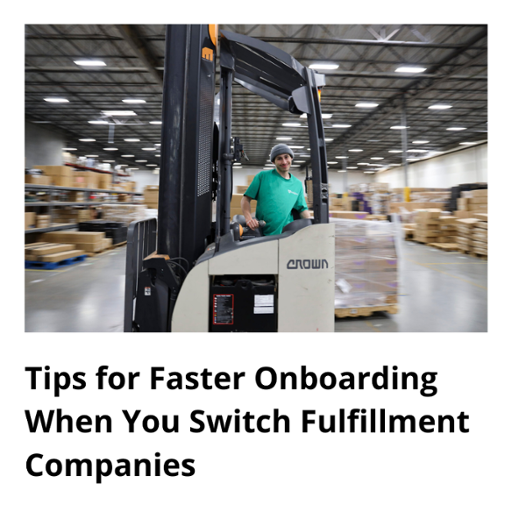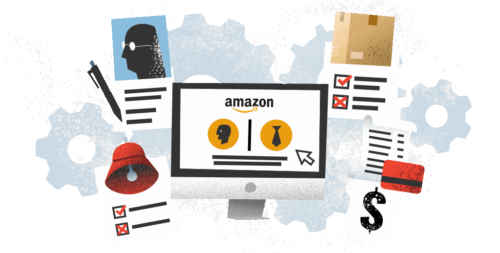As your eCommerce business grows, so does your customer base. It can be easy to stay on your own online storefront, but there are so many options out there to sell your products. If you thought about growth within your business, Amazon has probably crossed your mind a few times. It’s easy to start selling on Amazon. But, it can be hard to get your products in front of your consumers. In this article, we discuss how to list products on Amazon*.
*Nothing in this article is meant to imply a legal relationship between Red Stag Fulfillment, LLC and and any company mentioned. Red Stag Fulfillment, LLC does not own any other company’s trademarks referenced or included in this article. Information gathered for this article came from a mix of publicly available news and websites, websites of the companies mentioned, and direct communication with named companies.
Getting started
Before you can list your first product, you need to register your business, review the costs of selling on Amazon, and get to know Seller Central. First things first, it’s time to create your seller account.

Registering your business
The first thing you need to do is pretty easy. Register your business and create a seller account on Amazon. Here you will have two selling plans to choose from, the Individual plan and the Professional plan. Each plan can be beneficial, but it’s best to compare plans to find the best one for your eCommerce business.

Review selling costs on Amazon
Each business will deal with different selling costs. From subscription fees to FBA (Fulfillment by Amazon) fees, your business needs to review the costs that it might face before listing products on Amazon. Additionally, you need to consider referral fees and other costs that can vary significantly from business to business. Referral fees are essentially Amazon’s cut for helping you sell your product and are different based off each category of product. For example, you would pay Amazon around 15% of the total price for selling books, but if you sold clothing, you would pay 17%. Other costs your business might face range from inventory fees to high-volume listing fees. As you start to sell your product on Amazon, be sure to consider additional selling expenses you may incur.
Get to know Seller Central
Once you finally have your account ready, it’s best to get to know Seller Central. The Seller Central website can help you monitor sales activities, update product pricing, and add new products — the go-to place on how to list products on Amazon. So, it’s important to understand how the website works before placing your first item on the market.
Preparing to list your products on Amazon
Once you’ve created your Amazon Business account, it’s time to list your first product on Amazon. However, it’s important to go through the correct preparations before filling out the product information.

First, you’ll need to make sure your product has a product identifier or Global Trade Item Number (GTIN). One option for the product ID is the Universal Product Code or UPC. If you’re selling products from a manufacturer, your product will most likely have an UPC and will be able to be recognized in Amazon’s catalog. If you created your own product or your product doesn’t have a product ID, you don’t need to worry! You can purchase an UPC from a third-party seller like BarCodes Talk.
Additionally, you’ll need to make sure you have the following information handy before creating your first listing:
- Product Name
- Description of product
- Product height and weight (if it’s a physical product)
- Images and/or videos of the product
- SKU
- Search terms and keywords based off the product
These items above make up your product’s details page and what the customer will see. It’s important to have the correct information readily available before listing it within Seller Central. Incorrect information can lead to your product appearing in the wrong search or worse — your product listing could be removed from Amazon’s marketplace.
How to list your product
Now that you have gathered all the information you need, it’s time to list your product on Amazon. There are a couple of options for listing your products on Amazon. The options solely depend on whether the item you’re selling already exists on Amazon or if it’s a completely new product.

Does it already exist?
The best way to find out if your product is already for sale on Amazon is by searching the UPC within Amazon’s catalog. If your product doesn’t have a product ID, you can easily look up the product by its name or by key identifiers, such as brand name, product description or ingredients. If you do stumble across your product on Amazon, don’t fret! You will still be able to sell your product.
Once you find your product, it’s time to decide if you will be selling your product one-one one or in bulk listings. If you’re planning to sell your product one-on-one, be sure to double check the product detail pages from other sellers that appeared in your search to see if the information matches your item. If it does, you can simply click on the ‘Sell this product’ button and be prompted to fill out the offer details like SKU, condition, and fulfillment channel. If you are planning on listing your products in bulk, use the ‘Inventory Loader’ option — available through the Professional selling plan. In this option, you will be able to upload your spreadsheet of product information to list individual products all at once.
Is it a completely new product?
When creating your own product or selling privately labeled items, you will most likely be selling a new item on Amazon. If your product doesn’t exist within Amazon’s catalog, click on the ‘Create a new listing’ button to get started. From here, you will need to choose the appropriate category for your product and fill out your product listings page. This page requires more information than if the item were already in Amazon’s catalog.
When filling out your product listing page, keep these things in mind:
- Your product title needs to be in titlecase
- Images need to be in square format (500 x 500 or 1,000 x 1,000 pixels)
- Utilize bullet points to describe your product
- Include keywords in your product description to improve visibility
Once you have all the information filled out within the product listing page, it’s time to save and finish. If you’ll sell your items via bulk listing, utilize the category-specific inventory files section within your Professional selling account. Similar to existing items, you will have the opportunity to upload your product information spreadsheet to list individual products all at once.

With 214.43 million unique monthly U.S. visitors to Amazon sites, it’s important to consider selling your products on Amazon. With proper selling plans and the most accurate product details, you can improve your sales by getting your product in front of the appropriate consumers.
How are you delivering your product to customers?
Now that you know how to list products on Amazon, it’s time to think about how you’re going to deliver your product to your customers. Amazon provides two options — you can manage order fulfillment through Fulfillment by Amazon (FBA) or by yourself. However, you’re not alone.
If you offer customers more shipping options, 3PL providers like Red Stag Fulfillment can help you manage and ship your products to your customers. If you already have a 3PL provider but it’s time to switch, click the picture below for tips on how to onboard faster when switching providers.








